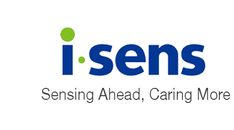
Type 1 Diabetes: Cause, Symptoms and Management
Type 1 diabetes mellitus (T1DM) is caused by the autoimmune destruction of pancreatic b-cells responsible for producing insulin,1,2 a key hormone that regulates glucose homeostasis.3 This loss of b-cells usually results in severe deficiency of endogenous insulin, preventing cells in the body from taking up glucose from the bloodstream to use as energy.1
Who Can Have Type 1 Diabetes?
T1DM is not as common as type 2 diabetes mellitus, accounting for 5-10% of all diabetes cases.1 It is commonly diagnosed in puberty and early adulthood and was once referred to as juvenile diabetes. However, it can occur in all age groups. As individuals with T1DM usually have long life expectancies, the prevalence of T1DM in adults is higher than that in children.
What Are the Symptoms of Type 1 Diabetes?
New-onset T1DM can present itself acutely or slowly.1 Although symptoms may vary, the three most common symptoms of T1DM are:
- Thirst
- Excessive urination
- Weight loss
Children with T1DM often show symptoms of excessive thirst and excessive urination. Nearly half of them also present with diabetic ketoacidosis (DKA).2
How Is Type 1 Diabetes Diagnosed?
Even though some adults with T1DM may maintain insulin secretion even after diagnosis, severe insulin deficiency usually characterizes T1DM.1 Other notable features for T1DM include:
- Younger age of diagnosis (<35 years)
- Lower body mass index (BMI) (<25 kg/m2)
- Unintentional weight loss
- Ketoacidosis
- Glucose >360 mg/dL
To differentiate T1DM from T2DM and monogenic diabetes, the healthcare team may also utilize tests to detect islet autoantibodies usually found in T1DM.
How Can Type 1 Diabetes Be Managed?
Insulin Therapy – One of the key goals of T1DM management is maintaining glucose levels in the individualized target range while minimizing and preventing episodes of hypoglycemia and DKA.1 Insulin replacement regimens either with insulin shots or an insulin pump is often required to achieve this glycemic control. The regimen typically includes basal insulin in the fasting state, mealtime insulin that takes into consideration macronutrients consumed, and correction insulin to treat hyperglycemia. Other important goals of T1DM management include managing cardiovascular risk factors and promoting psychosocial well-being.
Lifestyle Changes – Making key lifestyle changes can help manage T1DM. It is recommended to follow an individualized medical nutrition diet provided by a registered dietician, taking into consideration one’s personal preferences and risk factors. Additionally, regular aerobic and resistance exercises are recommended to promote insulin sensitivity, healthy BMI, cardiovascular health, and mental health, among various other benefits. Adjustments to diet and physical activity should be accompanied by appropriate adjustments to insulin doses.
|
References: |
(Disclaimer)
The content of this article is intended to provide a general information and knowledge on the subject matter. The views expressed in newsletters, articles, and blogs in the i-SENS USA website are not necessarily those of i-SENS Incorporated, i-SENS USA Incorporated or our publishers. Medical or nutritional information on i-SENS USA website is not intended to replace professional medical advice – you should always consult a specialist with any questions about your specific circumstances.





Add a comment